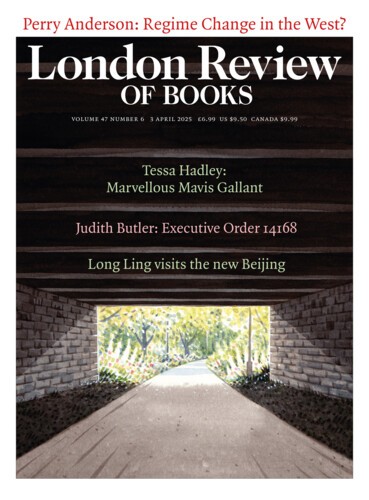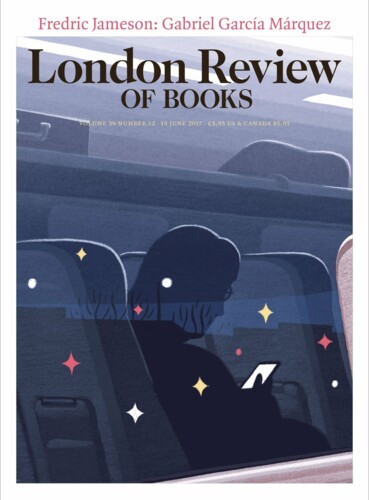Edward Ashton’s novel Mickey7 (2022) has an opening line that’s hard to beat: ‘This is gonna be my stupidest death ever.’ The speaker is lying in an ice-encrusted cave which he fell into as he walked through a rocky landscape. But what about his other deaths? Bong Joon-ho doesn’t quite match this announcement in Mickey 17, his dizzying movie version of the story – the visual can be a little more obvious than the verbal – but he does give us a pile of mysteries to think about and to enjoy, especially when we fail to figure them out. His film has a detailed voiceover reporting on the frozen figure, but not right at the beginning. Here we just see the iced-over face of an apparently dead man. Then he begins to pull some of the ice from his face, as if it is a sort of disguise, and we realise that he is alive. Or, rather, available for new programming. A face looks down from the rim of the cave and asks him what it is like to die. And in what seems to be a sudden error or fluffing of time, the owner of the face says he hopes our hero will ‘have a nice death’.
This is a world in which death for some people, known as the Expendables, is not final. Their remains are put into a machine for what is called a reprint, and they emerge to start another life as guinea pigs on a strange planet, testing everything there is to test. The date is 2054 and we have no idea where the planet is. We do learn that the image of the man in the cave is a flashback, because it returns about a third of the way through the catch-up tale. We see Mickey (Robert Pattinson) and a crowd of other people seeking to be chosen for an expedition that will take them away from Earth. Mickey and a friend have a particular need to be elsewhere in order to escape being murdered by the gangs to whom they owe money.
Some of the travellers are going to be human soldiers and clerks and operators; others will have the digital destiny described above. The whole operation is the project of an American politician who couldn’t get elected at home. Throughout the film, he is guided by his wife, who provides him with the right bits of script at the right moments. The constant presence of news reporters and cameramen makes the movie itself look rather like a film of a film.
The politician is Kenneth Marshall, played with impeccably overloaded gusto by Mark Ruffalo. His wife is Ylfa, portrayed by Toni Collette with wonderfully sinister subtlety. The pair of them are the monsters of a fairy tale that looks remarkably like a riff on contemporary American politics, full of talk of purity and superiority and undesirable people who will not make it to the new Eden.
By the time we have worked through the flashback, we know who gets accepted for the expedition, and have begun to know what life is like on the giant spaceship, which resembles an enclosed metal stadium with lots of corridors and cabins. The story develops interesting wrinkles. Mickey 17 is mistakenly thought to have died in the cave and a Mickey 18 appears to crowd the scene. Mickey’s girlfriend, Nasha (Naomi Ackie), rather likes the idea of having two versions of him, but the Mickeys hate each other and fight constantly. There is an eerie visual moment when we see both of them stripped to the waist with a number written in red on their chests – as if they were identical animals with only signs to distinguish them. The rules of the world they live in ban the very existence of such ‘multiples’, although the story is told of a man who managed to keep three selves on the go at once. This allowed him to commit crimes and go free, since one of his incarnations always had the alibi another one needed. In the end the Mickeys stop quarrelling and become part of Nasha’s attempt to help the natives of the planet Niflheim, where Marshall means to exercise sole rule.
These natives are called creepers, but they don’t really creep, they scramble and squat. They are not human, and at first look like a science fiction cliché: creatures that are somewhere between bears and reptiles, covered with more hair than we can believe and more feet than we can count. The sense of cliché soon slips away because, within the film’s context, they are too real, and they mean no harm – they have already saved a human they might be thought to have wanted to devour. They can talk too, although their talk sounds like growling. One of the scientists onboard the ship has invented a device that will translate these growls into English, and conversely, the speech of the travellers into the appropriate growl. Peaceful chats ensue and Marshall’s attempt to exterminate all the natives leads to his death.
His one death. Will the Expendables continue to migrate from life to life as before? Are they really migrating or are they different people with the same names? People keep asking Mickey what it is like to die. He can’t really answer except to assert that it is scary and nasty and that there is no comfort in it. He’s saying, among other things, that the idea of a return to life is not part of the process, but then how are we to understand the novel’s first sentence and Mickey’s behaviour throughout the movie? What would happen if we called reprinting something else, and in what sense are ‘multiples’ the same person?
Bong is as interested in these questions as Ashton is, more so perhaps if we acknowledge his change of the novel’s seven lives to seventeen, and the film interrogates an imagined preference for reincarnation. Wouldn’t we all like to come back from our several deaths? Aren’t religions built on the concepts of avatar and resurrection? In Mickey 17 the chance of living again is linked to a form of slavery. The film itself ends with marks on a board rather than a photographed human scene, letters and numbers offered as a visual tribute to mortal singularity. The board shows the letters and numbers MICKEY 18. Then 18 turns to 17, before 17 turns, slot by slot, into B-A-R-N-E-S. The name lingers on the screen: MICKEY BARNES. The only one. Except, of course, that name is quite common. We may have to start thinking again.
Send Letters To:
The Editor
London Review of Books,
28 Little Russell Street
London, WC1A 2HN
letters@lrb.co.uk
Please include name, address, and a telephone number.

